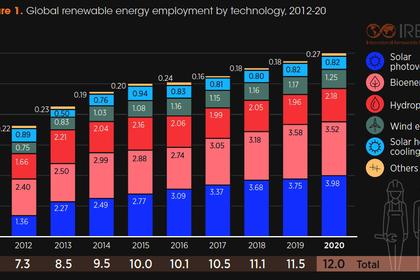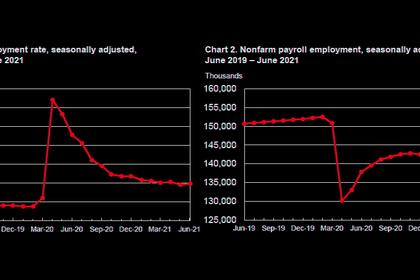
ENERGY EXODUS OF EMPLOYEES

By NEVELYN BLACK Writer Independent
ENERGYCENTRAL - Oct 27 - The focus for service related industries is customer retention but during the pandemic an increased number of resignations has companies on high alert. Lately, employee retention is a top priority. The health care, construction and manufacturing industries have seen a record-high exodus of employees. The staggering number of people quitting their jobs has been dubbed the Great Resignation. While many are resigning, Baby Boomers are retiring at an alarming rate. 3.2 million more retired in the third quarter of 2020 than did in same quarter of preceding year. The Center for Energy and Workforce Development has found that nearly 55% of the electric and natural-gas public utility workforce across the country could retire within the next decade leaving a significant workforce gap that will need to be filled quickly. This workforce dilemma was predicted but the pandemic accelerated the inevitable labor shortage we are seeing now. Many employees have begun to reevaluate what they expect from their employers. They are seeking greater opportunities, competitive compensation and more flexibility, like remote working. Gallup research from earlier this year found 48% of the American workforce was actively looking to change jobs. Those leaving don’t feel connected to their company’s mission, lack strong relationships at work or feel there are no opportunities for development.
Utilities are not immune to this phenomenon. In fact, the past year and a half of devastating weather events has shown just how important utility workers are. Unfortunately, we may be facing an energy crisis of a different kind. Feeling burned out from the demanding hours and lack of additional support, lineman are leaving their jobs. “They’re leaving their families and they’re not seeing them one week, two weeks, or maybe even three weeks depending on the storm they’re working,” said Travis Eri, Business manager for union IBEW Local 125. Recognizing the problem, Portland General Electric expressed empathy in a statement: “It’s been a difficult year with events that have challenged most Oregonians and line workers, specifically, through historic fires, winter storms and heat waves. The national shortage of skilled line workers hasn’t helped. Even still, PGE is seeing lower overtime hours than in the last three years, and, PGE has approved more furlough requests for frontline workers than ever before. PGE consistently reinforces safety as our number one priority.” Other industries are also using furloughs and reduced hours to relieve the stress. Recently, LinkedIn gave its employees a mental week off to cope with burnout. This is a win-win because a recent study conducted by Stanford University found if a person exceeds 50 hours of work in a week, their productivity takes a sharp decline.
From recruiting to mental health support, several ideas are on the table as companies try to retain skilled employees. The latest “Beamery Talent Index” surveyed 5,000 employees in the U.S. and U.K. and found that "Gen Z is a mission-driven generation [and] pivoting to non-traditional recruiting methods with a focus on company culture, employee engagement, DE&I and sustainability is key to attracting future generations.” Abakar Saidov, Co-Founder and CEO at Beamery continued, “In the fierce battle for talent, businesses across the globe continue to grapple with a tremendous amount of rapid change, from work environments to employee perceptions and preferences…” said Abakar Saidov, Co-Founder and CEO at Beamery.
However, linemen can not work from home. Utilities will need different incentives to encourage the growth and development of the next generation of workers. The task may prove to be more challenging than they expect. They must also combat a bad reputation, disrepute or being looked down on in comparison to other career choices. Like HR leaders in manufacturing, utilities may find there is a negative view of the industry among younger workers. The state of New Jersey and the Center for Energy and Workforce Development are urging policymakers, utilities, and educational institutions to coordinate and find innovative ways to engage students at early educational stages to view utilities as an optimal career choice. This is imperative according to the new EY Power & Utilities Digital Transformation and the Workforce Survey. The survey found 94 percent of power and utility executives agree on the need for direct investment in technology and the skilled workforce to operate and implement those new technologies.
The new U.S. government infrastructure plan will create a massive amount of new projects. These long awaited projects will finally receive the funding and support the need but will there be anyone to do the work? What collaborations has your utility been involved with to train the next generation of utility workers? And what is being done to retain and support your current workforce? “There's more work so we need more workers,” said William French, business manager for the International Brotherhood of Electrical Workers Local 295 in Little Rock, Arkansas.
-----
This thought leadership article was originally shared with Energy Central's Utility Management Community Group. The communities are a place where professionals in the power industry can share, learn and connect in a collaborative environment. Join the Utility Management Community today and learn from others who work in the industry.
-----
Earlier:















